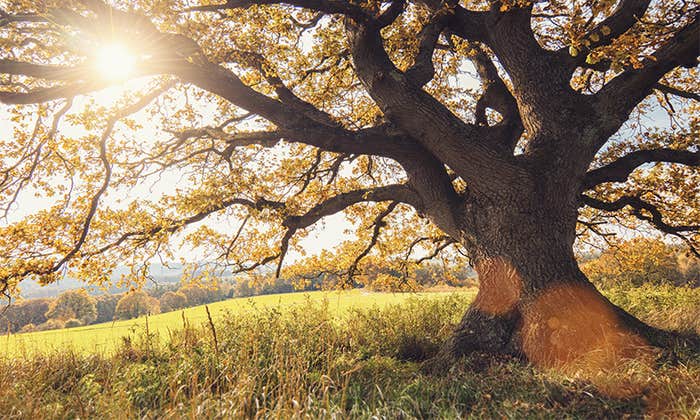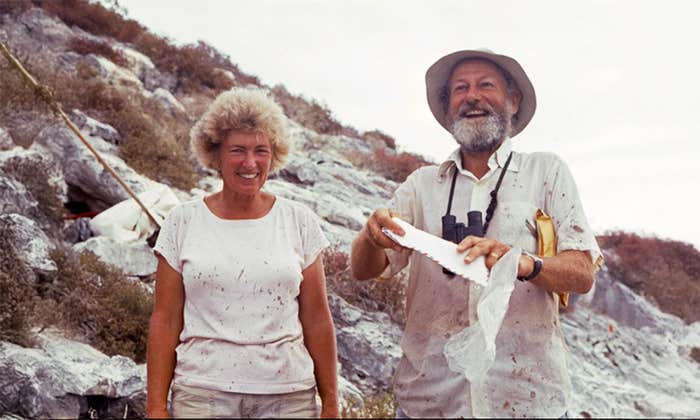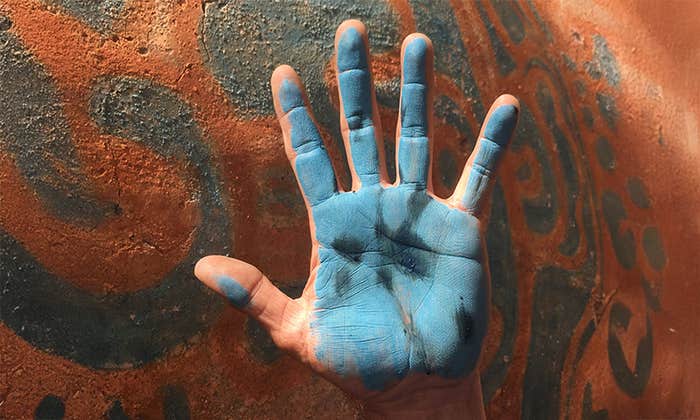On a blazing morning in October, I paddled my surfboard into a caramel-colored sea off a beach in Brazil, hoping to catch a wave with its own individual rights. The wave rose up against the wind as if in greeting, its perfect peak of foam resembling the enigmatic smile of a new friend.
Under a local ordinance signed in August 2024, the wave is now considered a person in the eyes of the law. It has the intrinsic right to existence, regeneration, and restoration and to the natural flow of the river that feeds it. With the help of human advocates, it can bring cases against those who harm it. It’s a small victory for the growing rights-of-nature movement around the world.
The wave runs along a four-mile stretch of beach that is bounded to the north by a 500-mile river called the Rio Doce, or “sweet” river, and to the south by a turtle reserve. Just behind that beach sits Regencia Augusta, a small fishing village and weekend tourist destination for Brazilians with one grocery store and a population of a little over 1,000. Regencia is still recovering from what is often described as the worst environmental disaster in Brazil’s history, the collapse of a mining dam on the Rio Doce nine years ago.
People in Regencia divide time in two: before the mud and after the mud.
As I sat on my board in the waves, I watched other surfers, many of them young kids, crouch and ride in perfect sync with the swell. That morning, the size of the surf was small—about three feet high from the base—but the lip was steep. Looking over the edge, I felt a flush of vertigo. Many advanced surfers have snapped bones here because the wave is heavy and breaks in shallow water.
I paddled toward the peak preparing to ride, but kept hesitating at the crucial moment. The wave was much faster than I am used to, and I was having trouble getting out of my head. Finally, I made the drop, but I lost my balance and the wave pounded me into the sand, the churn of the whitewater in my ears. The cycle repeated. I needed to figure out what the wave was trying to say.
Earlier that morning, I met former surf pros Robson Barros and Fabricio Fiorot on the beach. Barros and Fiorot are both active in the local surf association, which played a major role in getting the new law passed. They were joined by their sons, lanky, long-locked surfers who bopped around restlessly on the sand, eager to hit the water. Almost 30 years ago, Fiorot told me, he moved to Regencia “for a dream.” He wanted to live in closer communion with the wave, which locals insist is Brazil’s most perfect barrel, the ultimate draw for many surfers. In the right conditions, it forms long hollow tubes that embrace the ready athlete in a rhythmic knot, forming a kind of human-ocean chimera.
When Fiorot and Barros moved to the village, which sits at the end of an 18-mile dirt road, many thought the wave was just a legend. Then a slew of wave-check websites emerged online and began providing details of specific conditions at different breaks around the globe. Suddenly, there was proof for outsiders that the wave was real. “And from there, Vwwwoooosh!” Fiorot made an explosive motion with his hands. The area earned the nickname Tubolandia, land of the barrels, and primos de Bali, which translates as “cousins of Bali,” another barreling surf paradise. Surfers started coming from all over Brazil and even from places as far away as Australia.
But just as quickly as it had begun, the surf scene—and their entire way of life—collapsed. “The mud destroyed it,” Fiorot said.
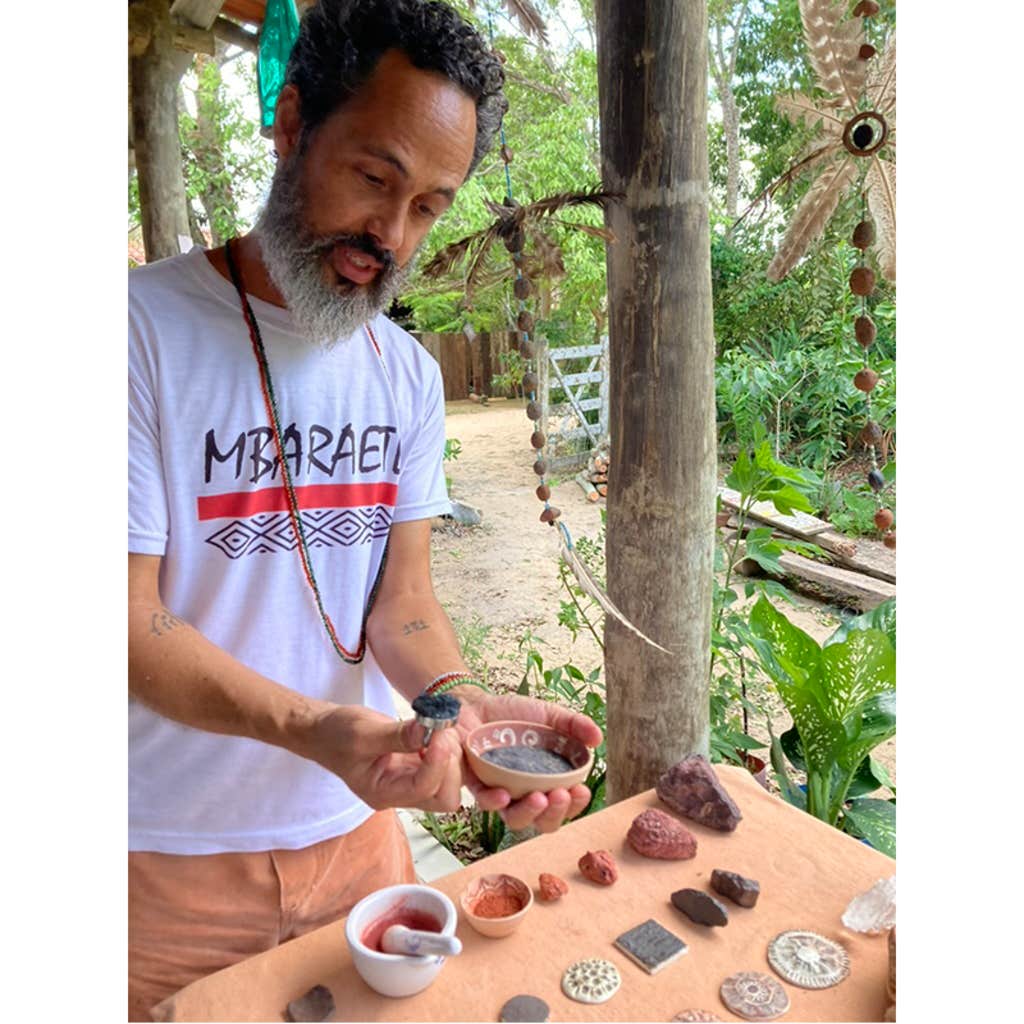
In November 2015, a mining wastewater dam for an iron ore mine in the state of Minas Gerais failed, burying an entire village, killing 19 people, and pouring a tsunami of over 1.7 billion cubic feet of toxic mud into the Rio Doce, equivalent to about 21,000 Olympic swimming pools. The sludge polluted the water supply for more than 1 million people across 35 cities; decimated entire populations of fish; killed birds, amphibians, and mammals; destroyed native vegetation; and flattened the homes of nearly 600 people.
Some 16 days after the collapse, the waste reached the sea, and a giant plume spread hundreds of miles out into the ocean and along the coast. The water outside Regencia turned a deep shade of rust. Vultures descended on the beaches to pick off the dead fish. Fishing, swimming, and surfing in the affected waters were prohibited. Barros moved to a city three hours south and wasn’t sure he would return. Fiorot shut down the surf school he ran and never reopened it. Tourism evaporated. As mining waste built up along the bottom of the river and at its mouth, the force of the river was nearly extinguished. It stopped moving torrents of water into the ocean and sediment into the seabed. The wave lost its perfect primordial shape.
In the years since the dam broke, one of the biggest biomonitoring programs in Brazil has employed a corps of some 500 researchers from universities around the country to monitor the impacts of mining waste on the region. Despite billions of dollars reportedly dedicated to cleanup efforts, these researchers report that the entire Rio Doce basin and many of the creatures who live in it remain contaminated with heavy metals such as lead, copper, zinc, arsenic, mercury, cadmium, and chromium, often at levels that are well above legal limits and toxic to health.
Even the blood and urine of humans living along the river have been found to be contaminated with heavy metals. Fiorot said researchers tested his blood in 2016 and found it heavily polluted with arsenic. There seemed to be no sense of when it might be safe to fish here or drink the water again, or whether it was even safe to surf week after week, year after year—though many do. Today, people who live in Regencia divide time in two: before the mud and after the mud.
Hauley Silva Valim stretched out his hand. Fine grains of iron dust the color of apricots coated a circle at the center of his palm. These were the same grains that form a gelatinous coating at the bottom of the Rio Doce, in some places up to six feet deep, he told me. Valim was barefoot, wearing apricot-colored shorts that he dyed himself and a white T-shirt, and his curly black hair formed a halo around his head. He lives in a ramshackle house with a riotous garden in Regencia, not far from the beach.
An anthropologist, theologian, surfer, and self-proclaimed alchemist, Valim explained that the Regencia wave is more than just a surfer’s dream. “The wave brings to us this kind of request for listening, to listen to the language of nature—to understand the language of nature, which is enabled by the silencing of the human mind,” he said.
Valim was one of the primary architects of the law to protect the wave, which was signed into law by the municipal legislature of Linhares, the municipality to which Regencia belongs. Granting rights to the wave comes from a “philosophy of regeneration, a principle of liberation,” he said. “Water should run free.”
The day was hot and humid, and we sat together in an open-air room next to his garden, which looked like a cross between a lab and an art studio. We were joined by Hanna Ayres Burnier, a yoga teacher and practitioner of Aryuveda, a holistic medicine. Burnier, whose parents live in town and operate an inn and artisanal brewery on the beach where I was staying, was translating from Portuguese for me.
At a bend in a dirt road, we slowed to a stop for protestors who aimed to block big corporations.
On a small table, Valim had placed a tablecloth, also dyed apricot, and on top of that he had arranged several tidy lines of objects: a small bowl of iron shavings, various rocks that represent different forms of mining waste, round tiles decorated with black iron glaze and beautifully stenciled ceramic bowls featuring the same pale peach color. He had been making art out of mining waste, he told me, turning the fine grains into dyes for pottery, recycling it into beautiful objects that he then used to teach kids about pollution and regeneration in nature.
Valim said the new law could help liberate the wave and the river that feeds it from threats posed by local extractive projects—not just ongoing contamination from the dam break, but also from hydroelectric dams and paper plants that are diverting Rio Doce flow, and from future ocean drilling platforms, which had been proposed off the coast of Regencia in the past. About 40 other mining dams in the Rio Doce watershed are also reportedly at risk of collapse. But it may be some time before the law is ready to be tested in court—a committee still needs to select the five guardians who will act as the wave’s representatives and enforcers and be responsible for proposing public policies to support the law.
Still, rights-of-nature laws are riding a wave of cultural momentum. The movement began in the 1970s with an essay titled “Should Trees Have Standing?—Toward Legal Rights for Natural Objects,” by American law professor Christopher Stone. Stone wrote that the history of law has followed the arc of human moral development, described by Charles Darwin in The Descent of Man. “Originally each man had regard only for himself and those of a very narrow circle about him … then ‘his sympathies became more tender and widely diffused.’” The rights-of-nature philosophy shifts the value of nature away from its ability to provide resources for extraction to its capacity to sustain life.
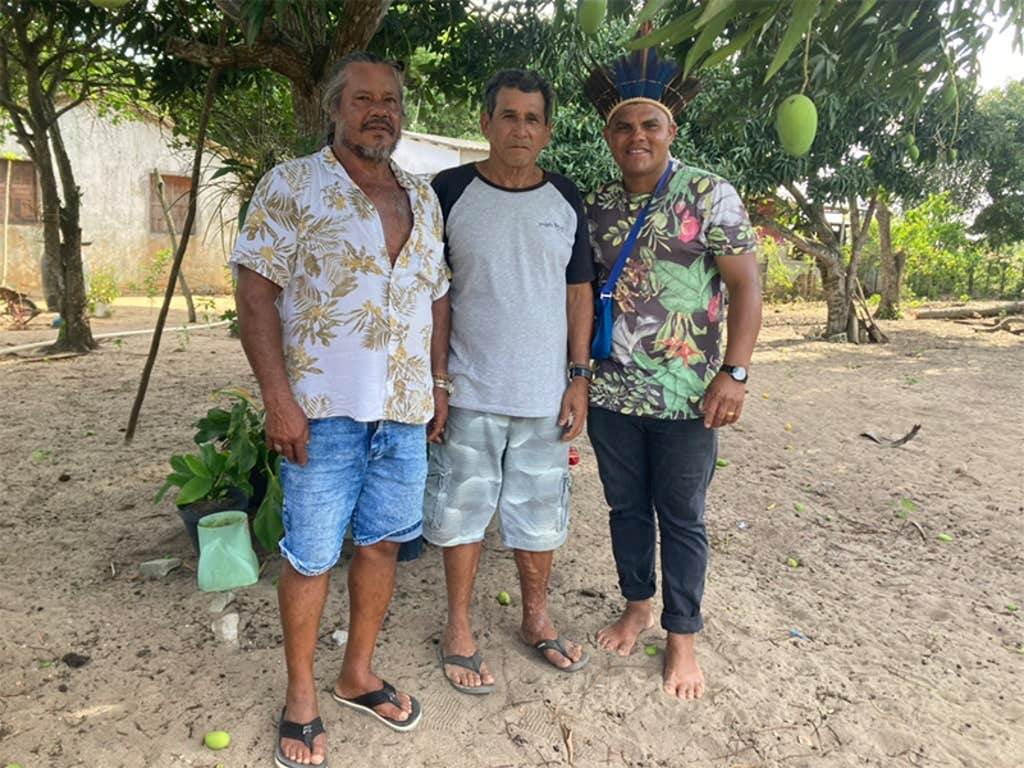
Rights-of-nature laws have taken root worldwide, especially in South America. In 2008, Ecuador became the first country to write rights of nature into its constitution. The amendment makes specific reference to the Indigenous Quechua concept of sumak kawsay, or “plentiful life,” which advocates for taking only what you need from nature and nothing more. Since then, the constitutional court has decided several cases in favor of rights of nature and against the interests of industry. The most significant case is that of Los Cedros, a protected cedar cloud forest in the tropical Andes of northwestern Ecuador. In December 2021, after a long legal battle, the judges in a constitutional court upheld the forest’s constitutional rights to “exist, survive, and regenerate,” annulled a mining concession that had been granted to two-thirds of the forest, and ordered restoration of any damages.
Over the past two decades, more than 140 rights-of-nature provisions have been implemented around the world. Many individual laws now recognize the rights of rivers such as the Ganges River in India and mountains such as Mount Taranaki in New Zealand. In Colombia, the Supreme Court recognized the Amazon rainforest as having legal subjecthood and ordered the government to develop a plan to reduce deforestation to zero. And in Bolivia, a universal declaration recognizes rights for the entirety of Mother Earth, described as a “community of interrelated beings.” That declaration sets forth that no distinction should be made between “organic and inorganic beings,” such as a rock or a wave.
Environmental lawyers say that full implementation of these laws would require a fundamental shift in many domains of law. But Mauro Figueiredo, a Brazilian environmental lawyer and surfer who has been working in coastal conservation for decades, told me the new law needs to have time to flourish, to spread the word. Brazilians need to “understand that taking care of other living beings, they are taking care of themselves,” he said. “Because it’s not just recognizing the intrinsic value of nature, it’s having a very strong ecological literacy within the community.”
Valim sounded similar notes. The Regencia wave is a way to teach people about the fundamental connections between the elements of nature—not just river and ocean, but also currents and tides and the motions of celestial bodies that govern them. Giving the wave “personhood” is a powerful reminder that humans are part of nature, too. It has emotional and storytelling appeal that could change minds and influence behavior. It’s “like raising a flag,” Valim said.
Valim had put me in touch with one of his mentors, José Souza de Barcelos, the spiritual leader and guardian of plant knowledge and healing practices for the Indigenous community of Aldeia Areal de Linhares, a 10-minute drive inland from Regencia. The community identifies as Botocudo, an Amazonian hunter-gatherer tribe who lived primarily in Minas Gerais and were originally named for the wooden disks they wore in their lips and ears.
After lunch, Burnier drove me to Barcelos’ place. At a bend in a dirt road, we slowed to a stop for about a dozen adults and children gathered under some trees. They aimed to block corporations, such as Brazilian energy giant Petrobras, from using the road. The blockade was part of a larger series of protests happening throughout the region. The reasons were many, but the primary one seemed to be that the government had, just that week, made an out-of-court agreement with mining companies responsible for the 2015 dam break without consulting the people who were affected. (They weren’t consulted in 2016 either, when the first agreement was signed.) With a smile, Burnier told them where we were headed, and they nodded and let us through.
When we arrived a few minutes later, we sat on Barcelos’ spare concrete porch in plastic chairs while he called two others on his cell phone to join us. Barcelos had a broad handsome face and dark hair lightly flecked with gray and spoke quietly. He was wearing a T-shirt emblazoned with the logo of Projeto Tamar, a turtle conservation project that works in the reserve just south of Regencia. Soon the cacique or chief of the community, Carlos Gil Monteiro da Silva, arrived wearing a brown-and-blue feather headdress, a tropical flower print T-shirt and jeans. He had short, cropped hair and a crisp but friendly demeanor. He was followed by Augusto da Silva, a former fisherman from the town. (Augusto and Carlos are unrelated.)
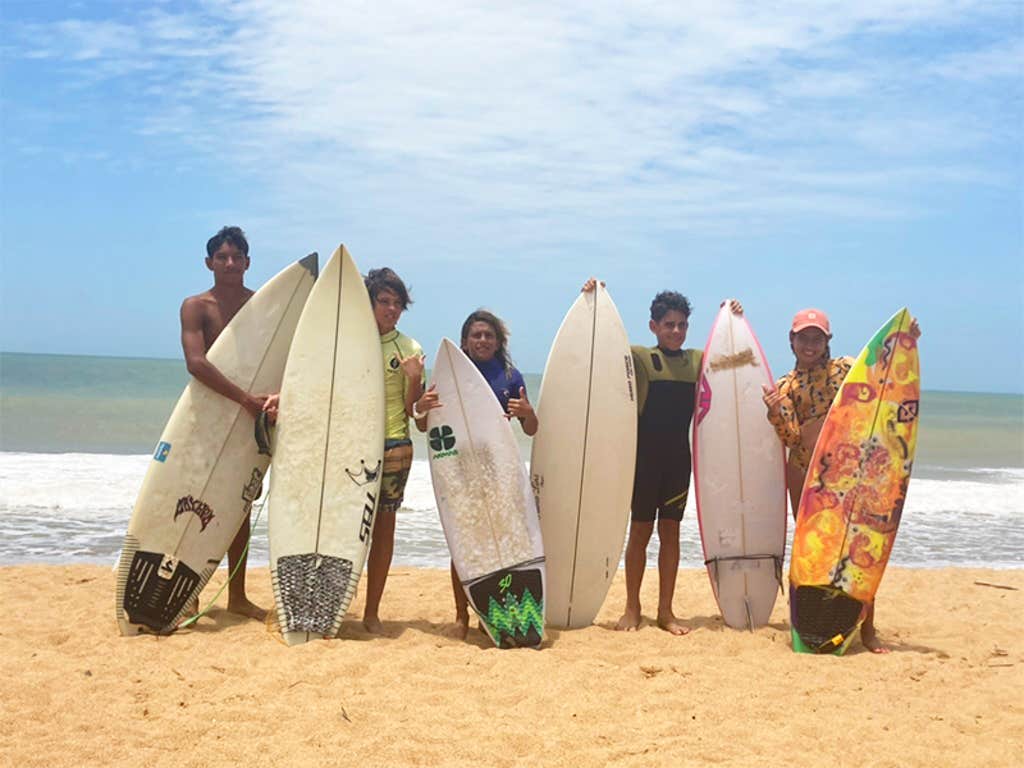
The community of Areal considers the Rio Doce a living being, like a cherished family member. Before the dam break, learning to swim, fish, row, and hunt in the river, and to identify plants on the riverbanks used in traditional medicine, were all central to local identity. But the river is now off limits to them, and the catfish, mullet, seabass, and other fishes they used to catch are too dangerous to eat. Many herbs found on the banks of the river as well as fish bones used in traditional medicines have also been lost after the mud.
The spiritual relationship to the river was “100 percent severed,” Barcelos said. “If you cannot drink the river water, if you cannot swim in the river, if you cannot fish in the river, there’s no way to relate to the river.” The river has become “a source of fear,” added Augusto da Silva. After the dam break, they would find fish stuffed with mud in their guts, and the kids who snuck into the river’s waters would develop itching all over their skin. Augusto used to make a living as a fisherman, but now they cannot fish at all, so he works insecure day jobs at a cacao plantation or in construction.
To fill the hole left by the poisoning of the river, the community is trying to revive cultural traditions that do not rely directly on the river—such as congo, an Afro-Brazilian musical and spiritual tradition—particularly for the kids. But they are also open to adopting what Monteiro da Silva called the “culture of the wave.” This culture is new to them because the ocean lies seven miles down river from Areal, and they do not often find reason to go there, he said. But “even in the river, there are wavelets,” he said, making a motion with his hands, and these wavelets are an expression of the same fundamental forces that govern ocean waves.
When I asked if the new law empowering the wave would benefit his community, Carlos da Silva said he believed it could, by helping to restore and protect the river, bringing visibility to those who live along it, and even leading to programs that provide the community with resources for surfing. If given the chance, a new generation of Indigenous kids might become expert surfers of Regencia’s waves, and this might “take them away from drugs and bad choices,” he said. “We understand there must be a union of cultures.”
Not far from where the wave breaks in Regencia lies a hatchling ground for endangered leatherback, loggerhead, and green turtles and I learned that these turtles, too, have an intimate connection to the waves. October is the height of turtle nesting season, so one night, José Cerri from the turtle conservation group Projeto Tamar, which has been operating here since the 1980s, offered to show me the turtles’ terrestrial home. Over the past five years, he told me, researchers have been recording changes in the turtles’ health.
Tissue and blood samples taken from turtles, unhatched eggs, and dead hatchlings show high levels of contamination with heavy metals, such as iron and arsenic. Green turtles also have elevated rates of tumors. It’s not just the mining waste, said Cerri. The waters along the coast are also polluted by cellulose factories that operate in the Rio Doce rivershed. “These are the things that the turtles are facing now,” he said.
If you cannot drink the river water, if you cannot swim in the river, there’s no way to relate to the river.
At 8 p.m., I climbed into Cerri’s Jeep. The night was black and starless, heavy clouds smothering the cosmos. Looking for tracks is preferable to looking for turtles, Cerri told me, because one can easily mistake a rock or a piece of driftwood for an animal. After a short time driving along the beach, he spotted a familiar trail in the sand. In the red circle of light from his flashlight, I watched a giant loggerhead turtle scooting down a steep slope of sand. She had just laid a clutch of eggs and was returning to the ocean. Aside from Cerri’s flashlight, the only light illuminating the scene rose from the froth of the ocean waves breaking on the shore. That white light was the turtle’s guide, Cerri told me. Finally, a wave came and washed her out to sea.
Cerri marked the nest so he could return later to build a protective fence around it. When the babies hatch, the biologists guide them to the ocean, but they make sure they feel the sand first, “so they can memorize the beach,” he said. The turtles return to lay their eggs on the same shores where they are born. I was struck by the curious connections some creatures have to specific places, across generations. The rest of the turtles’ lives are lived at sea, where they often traverse vast stretches of ocean with no landmarks in sight. How do they find their way?
Scientists have learned that the turtles rely in part on signals from the Earth’s magnetic field. But the hatchlings also depend on the motions of the waves, which direct them into specific networks of currents that keep them safe and help them navigate. Without the cherished waves of Regencia, these turtles might not be able to cross the open ocean or know how to return to the beaches where they were born.
On my last day in Brazil, I woke up early and headed down to the water, intending to give the wave another try. Along the beach lie several different surf breaks, each with different defining features. There is the fast, shallow tube by the turtle reserve at the far edge of town, known as Reserva, that I had already tried, and a long serpentine wave just south of the river mouth. A few other breaks lie in between. I saw some young surfers heading down the beach and followed them to the spot next to the river mouth.
The water was an opaque chocolate color and was peppered with debris, bits of black wood. But the shape of the wave was friendlier, the lip a little less steep. This time, the drop was manageable. I caught several waves in succession and rode them to the end. The rides were not long, but long enough that I could empty my mind of everything but the cadence of the water, the power of the ocean beneath my feet. I was thrilled to share with the other surfers this strange communion with something so fleeting and so infinite.
As I climbed back onto the beach, I was reminded that, at the smallest level, matter is both particle and wave, a fact that hints at a level of connectedness in the universe that is still difficult for most of us to comprehend. Perhaps the wave was telling me this: Every wave is many waves, nature is plural, so the efforts we take to protect it must be, too. The new law is not just about a surfer’s wave. It’s about a cherished river and the people who live on its banks. It’s about turtles with ancient ties to these shores. And it’s part of a much broader movement that is sustained by the idea of the interconnectedness of all life. But nature is also local and some of the most powerful conservation efforts are grounded in the direct connections individual people have to the places where they live. When we get close to nature, what we see is bounded by love: a sweet river, a single turtle ambling toward the sea, a beautiful wave. ![]()
Lead photo: A barreling wave breaks in Regencia Augusta, by Iuri Emanuel V. Simões
Special thanks to Vanessa Hasson de Oliveira, Brazilian rights-of-nature attorney and executive director of NGO MAPAS, for her help understanding context and gaining access to sources, and to Brazilian journalist Roberta Fortuna for translation, scheduling and logistics.



















